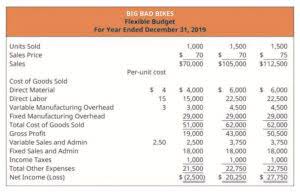Content
- Common Size Statements For Horizontal Analysis
- Horizontal And Vertical Analysis
- Horizontal Analysis Of Balance Sheet
- How To Use Activity Ratio Analysis To Understand Business Efficiency
- Horizontal Analysis: Should You Be Using It In Your Business?
- Balance Sheet
- Difference Between Horizontal And Vertical Analysis With Table

Comparability means that a company’s financial statements can be compared to those of another company in the same industry. Different ratios, such as earnings per share or current ratio, are also compared for different accounting periods. There are multiple forms of financial statement analysis—including variance analysis, liquidity analysis and profitability analysis—but two commonly used types are horizontal and vertical analysis. To make the best use of your financial data, you need a robust toolkit with plenty of options for slicing and dicing information in meaningful ways. In above analysis, 2007 is the base year and 2008 is the comparison year. All items on the balance sheet and income statement for the year 2008 have been compared with the items of balance sheet and income statement for the year 2007. It is important to understand the concept of horizontal analysis because of the following reasons.
- After orientation with human resources, I have a meeting with my boss and other new hires in the finance department.
- And vertical analysis is concerned with items presented within the current fiscal year.
- Horizontal analysis also makes it easier to compare growth rates and profitability among multiple companies in the same industry.
- Finally, when it comes to horizontal analysis, there might have been changes in the financial statements of the informations aggregation over time.
- It can be applied to the same documents, but is exclusively percentile-based and travels vertically within each period across periods, rather than horizontally across periods.
The report that provides the change in accounts helps the professionals assess the growth of an item being sold, by comparing the profitability and financial aspects of the report for multiple years. She goes on to say that https://www.bookstime.com/ is comparing a recent year to a base year and identifying growth trends. ‘Hopefully, this explanation sounds familiar, because you’ll use this process in your new job function. The analysis can be performed on any of the four financial statements; however, we’ll focus on the balance sheet and income statement,’ said Patty. While horizontal analysis is useful in income statements, balance sheets, and retained earnings statements, vertical analysis is useful in the analysis of income tax, sales figures and operating costs. Financial statement analysis, also known as financial analysis, is the process of understanding the risk and profitability of a company through the analysis of that company’s reported financial information. This information includes annual and quarterly reports, such as income statements, balance sheets, and statements of cash flows.
Common Size Statements For Horizontal Analysis
After orientation with human resources, I have a meeting with my boss and other new hires in the finance department. This can obviously be a big barrier to entry to investors wanting to get in on a business like Google. We have no way of knowing, because we don’t know the cash positions of Companies A and B, how profitable Companies A and B are, etc. This causes difficulties since it’s hard to compare companies of different sizes.
Hi , i am supposed to do trend analysis of last 10 years of two companies between them so should i take one year as base year and calculate changes according to that or do it taking 2 2 years. If the base year amount is zero or negative, percentage change is not calculated. The example from Safeway Stores shows a comparative balance sheet for 2018 and 2019 following a similar format to the income statement above. You can also choose to calculate income statement ratios such as gross margin and profit margin.
Horizontal analysis is an approach used to analyze financial statements by comparing specific financial information for a certain accounting period with information from other periods. So, common size financial statement not only helps in intra-firm comparison but also in inter-firm comparison. In Horizontal Financial Analysis, the comparison is made between an item of financial statement, with that of the base year’s corresponding item. On the other hand, in vertical financial analysis, an item of the financial statement is compared with the common item of the same accounting period. Horizontal analysis is a process used by financial analysts to observe trends in the growth of a business. Learn how to apply horizontal analysis methods, and how a balance sheet and income statement are used in this process. With vertical analysis, one can see the relative proportions of account balance.
Horizontal And Vertical Analysis
In this sample comparative income statement, sales increased 20.0% from one year to the next, yet gross profit and income from operations increased quite a bit more at 33.3% and 60.0%, respectively. Changes between the income from operations and net income lines can be reviewed to identify the reasons for the relatively lower increase in net income. Vertical analysis, horizontal analysis and financial ratios are part of financial statement analysis. It is used in the review of company financial statements over multiple periods. One reason is that analysts can choose a base year where the company’s performance was poor and base their analysis on it. In this way, the current accounting period can be made to appear better.

Dividing the difference ($100,000) by the base year’s amount ($400,000) equals 0.25. This means that the company’s net income increased by 25% from last year to this year.
Horizontal Analysis Of Balance Sheet
This enables you to easily spot growth trends as well as any red flags that may need to be addressed. For example, an analyst may get excellent results when the current period’s income is compared with that of the previous quarter. However, the same results may be below par when the base year is changed to the same quarter for the previous year. Vertical Analysis refers to the analysis of the financial statement in which each item of the statement of a particular financial year is analysed, by comparing it with a common item. Even though the Illustration Hotel’s Operating Revenue shows an upward trend, it is not nearly as positive as its competitors’ average.
We calculate the growth rate of each of the line items with respect to the previous year. For example, to find the growth rate of Net Sales of 2015, the formula is (Net Sales 2015 Horizontal Analysis – Net Sales 2014) / Net Sales 2014. When a negative amount is in the base period and a positive amount in the analysis period , we cannot compute a meaningful percent change.
The vertical analysis shows the relative sizes of the accounts present within the financial statement. Horizontal Analysis calculates the amount and percentage changes in financial figures from one period to another period of time. In other words, it compares financial data for at least two years/months/quarters/periods.
How To Use Activity Ratio Analysis To Understand Business Efficiency
Or if you find an unexpected increase in cost of goods sold or any operating expense, you can investigate and find the reason. Also called trend analysis, is a technique for evaluating a series of financial statement data over a period of time.

Horizontal analysis can be used with an income statement or a balance sheet. We can perform horizontal analysis on the income statement by simply taking the percentage change for each line item year-over-year.
Horizontal Analysis: Should You Be Using It In Your Business?
The decrease in sales has a bigger impact on the net income decline, when dollars are considered. If you purchased several fixed assets during 2018, the increase is easily explained, but if you didn’t, this would need to be researched. Get clear, concise answers to common business and software questions. Appointment Scheduling 10to8 10to8 is a cloud-based appointment scheduling software that simplifies and automates the process of scheduling, managing, and following up with appointments. The method also enables the analysis of relative changes in different product lines and projections into the future.
It can be done with the company’s Financial Statements or with the use of the Common Size Statements. The vertical method is used on a single financial statement, such as an income statement, and involves each item being expressed as a percentage of a significant total. Horizontal analysis is the use of financial information over time to compare specific data between periods to spot trends. This can be useful because it allows you to make comparisons across different sets of numbers.
Balance Sheet
This method of analysis makes it easy for the financial statement user to spot patterns and trends over the years. Horizontal analysis is an approach to analyzing financial statements. Horizontal analysis is performed horizontally across time periods, while vertical analysis is performed vertically inside of a column. If you divide $400,000 by $800,000, you get 0.5, which equates to 50%.
For example, a statement that says revenues have increased by 10% this past quarter is based on horizontal analysis. The percentage change is calculated by first dividing the dollar change between the comparison year and the base year by the line item value in the base year, then multiplying the quotient by 100. A comparison of the two companies’ financial statements based on vertical analysis, reveals that XYZ Inc. is extremely capital heavy as the proportion of its fixed assets is very high when compared to ABC Inc. On the other hand, ABC Inc has high dependency on loans for funds raising as compared to XYZ Inc who has a lower percentage of loans vis-à-vis equity. The above is done on balance sheets, retained earnings statements, fixed assets and income statements, and each line within these are considered separately as a percentage of the complete statement.
More In ‘business’
Occupancy is one of these metrics, so let’s use it as an example to clarify the issue. The horizontal analysis takes into account multiple periods or years, such as a decade. And vertical analysis is concerned with items presented within the current fiscal year. To perform vertical analysis (common-size analysis), we take each line item and calculate it as a percentage of revenue so that we can come up with “common size” results for both companies. Horizontal analysis involves taking the financial statements for a number of years, lining them up in columns, and comparing the changes from year to year.
Vertical analysis is the financial statement in which all items of a financial statement are presented in percentages. In vertical analysis, balance sheet items and income statement items are expressed in percentage. All balance sheet accounts are presented as a percentage of the total assets and all income statement items are presented as a percentage of sales (Ott, Riddiough, & Yi, 2009). Sales is assumed to be equal to 100, for income statement and total assets is assumed to be common based equal to 100 in case of balance sheet. In the vertical analysis, the assets, liabilities, and equity is presented in the form of a percentage.
Difference Between Horizontal And Vertical Analysis With Table
With this analysis, we can see where the money is going and if it’s time to make an investment on a new technology, find an alternative supplier, reallocate cash or make the adjustment to inventory. Thus, analysis of financial statements of a single company through vertical analysis can have limited utility. Further the utility of vertical analysis reduces if the manner of computation of the base item differs amongst companies being compared. Vertical analysis also does not reveal comparative sizes of companies as only percentages are analyzed and not absolute values. Horizontal analysis can be performed by comparing a recent year against the base year while identifying the growth trends between the time periods. The analysis can be performed in any four types of financial statement i.e. income statement, balance sheet, statement of cash flow, and statement of changes in equity.
For example, a low inventory turnover would imply that sales are low, the company is not selling its inventory, and there is a surplus. This could also be due to poor marketing or excess inventory due to seasonal demand. Horizontal analysis also makes it easier to detect when a business is underperforming. Thanks to everyone that has a clear and detail explanation about the horizontal analysis with a best eg. Hello I am difficult to understand which entry has to post where ..
